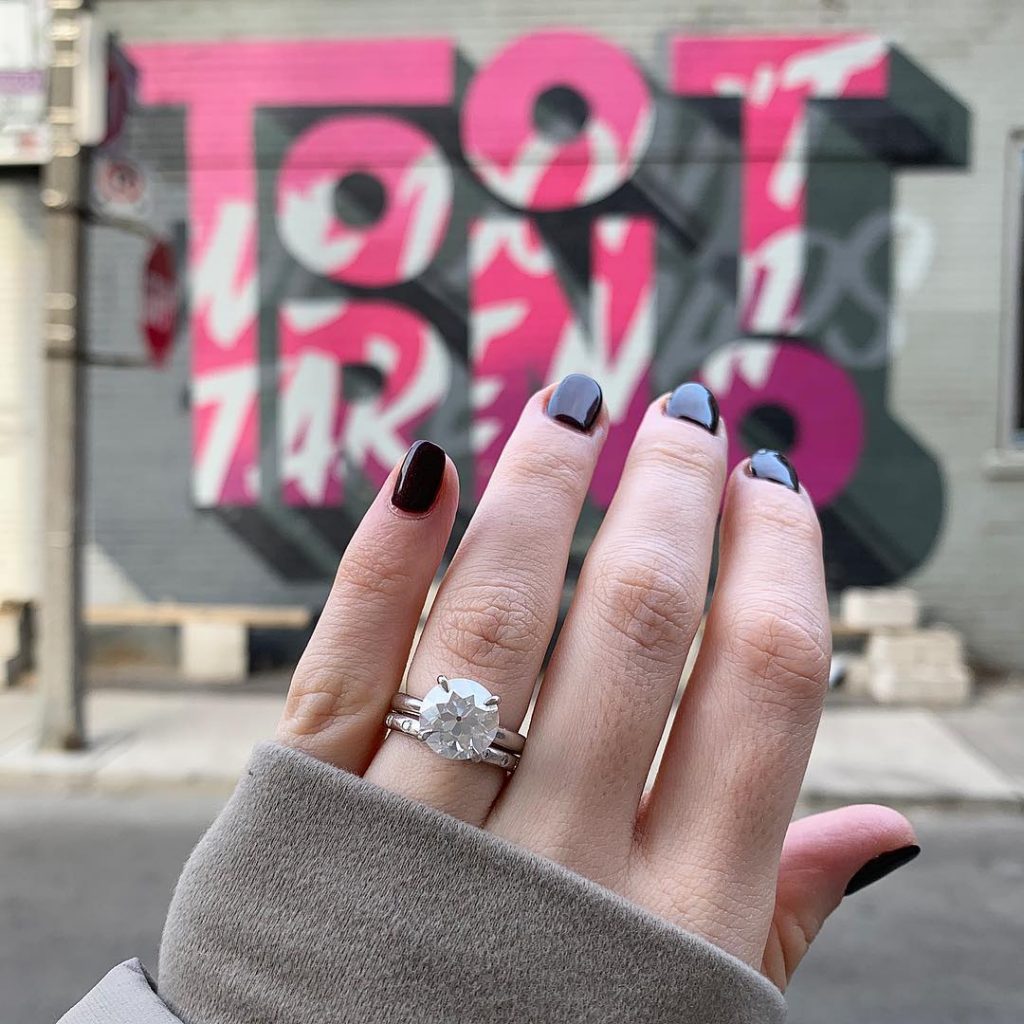When it comes to engagement rings, a growing number of millennials are opting to shine bright like a diamond without going the “girl’s best friend” route, choosing more affordable and sustainable alternatives like moissanite.
In a culture that increasingly values experiences over material things, young people no longer want to drop all of their dollars on hardware for the engagement finger.
There are too many places to check off the travel bucket list – and, to aptly document on Instagram in the process.
Toronto’s Ring Come True sees countless young couples in search of their moissanite and lab-grown diamonds. Moissanite is becoming the number one diamond alternative because it happens to look extremely like a diamond, sparkling even a bit more than one. It’s also a lot more affordable.
So, why exactly are we kissing traditional engagement rings goodbye?
A Desire to Spend Our Precious Dollars Elsewhere
“Considering that diamonds are really expensive, people are finding less reason to buy them in favour of other experiences,” says Shir Andrews, owner of Ring Come True. Especially in a city like Toronto with brutally high housing costs, many would rather allocate a large chunk of change as a down payment on a house, rather than a ring.
A study conducted by insurance group Allianz found that many of today’s brides value honeymoons and homes over pricy diamond rings. This is consistent with a recent survey from Contiki Tours, which revealed that Canadian millennials were willing to give up a variety of material things – from shopping to Tim Hortons – for travel. And who better to travel with than your new husband or wife?
An Informed Culture that Craves Individuality
We live in a culture of options and information available at our fingertips. “With more access to information from things like Pinterest and Instagram and people learning about the industry – and especially the price point – and realizing that they don’t have to go one route; there are a lot more options,” says Andrews.
While she says that the classics are still popular in terms of shape, in general, we have also seen an embrace of unique gemstones, cuts, and colours that suit personalities as opposed to the expected when it comes to today’s engagement rings.
“The greatest thing about moissanite aside from its appearance is that it’s a high-quality durable stone that will last forever,” says Andrews. “Sapphire or morganite, for example, will eventually have to be replaced because they get scratched.”

Ethics Come into Play
For all the glittery glory of a sparkly diamond, diamond mining can take a serious toll on the environment – something that is now common knowledge and something that’s often brought up with Andrews’ concerned clients.
Human rights violations that have characterized the industry also leave a bad taste in many mouths. “For ethical purposes, they are looking for something that’s a little more environmentally friendly than a diamond,” says Andrews. “It really just comes down to priorities.”
Ring Come True’s lab-made diamonds are a popular choice for this reason. Lab-made diamonds are increasingly popular and can look remarkably similar to the real deal, but typically cost around 30 to 40 per cent less. According to a Morgan Stanley report, lab-grown diamonds could take 7.5 per cent of the total market share by 2020.

A Change in the Way We Shop for Rings
Not only are the materials and designs changing, the way people shop for engagement rings has also shifted drastically since the days the men surprised their future brides-to-be with something they had chosen or a family heirloom. Now, Andrews says that about 80 per cent of couples are coming into the store together in search of that perfect engagement ring.
“I would say another 15 per cent would be already well-researched women coming in by themselves to find out what they like and figure it out to either essentially leave the notes with me or translate that to their future fiancés to come to place the order,” she says. This leaves just 5 per cent of men taking matter in to their own hands.
“The more we embrace diamond alternatives, the more common they will become, and the more they will become normal,” says Andrews. “A lot of people still feel shame and judgment about not having a diamond, but it’s nothing to be ashamed of. I honestly believe in the next two to three years, moissanite will be just as common as diamond. The key is to embrace it and not try to pass it off as a diamond.”
Featured Image: Pexels
Posts you might be interested in:
One Of Toronto’s Best Wedding Shows Is Back This Month
The Best Stores to Find Reasonably Priced Dresses for Weddings
How to Tackle Wedding Season Without Going Broke
How Much Should You Gift At A Wedding? We Find the Answer
The Drake Devonshire Throws Affordable Weddings For Millennials
